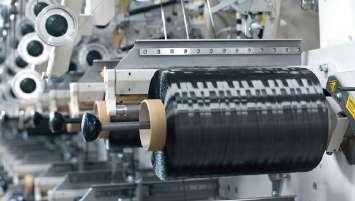FIBER UPDATE
31
ECO-FRIENDLY FIBRES FROM BIRLA CELLULOSE Clothing has become a fashion statement reflecting the wearer’s personality and the image a person wants to convey. However, as the fashion industry has expanded, so have concerns about the impact that clothing has on the environment, from how the fibres – the basic raw material for textiles and clothing – are sourced to what happens to the clothing when the useful life of a clothing item is over. All the stakeholders are now pecting the industry to take responsibility for better management of the complete value chain. Since the value chain starts with fibre suppliers, a lot of the onus falls on them to supply sustainable raw materials. This is where ecofriendly fibres have gained attention from the value chain and now also an increased share of the market.
more concerned and are ex-
wood from ancient and endangered forests when consumers are using Birla Cellulose fibres. Responsible Manufacturing Globally benchmarked Higg FEM Scores –The Higg Facility Environmental Module (Higg FEM) is a sustainability assessment tool that standardizes how facilities measure and evaluate their environmental performance, year over year.
Birla Cellulose has implemented ZDHC wastewater guidelines at all the fibre • Fashion is becoming key role in everyone’s life manufacturing sites. With • What is Birla Cellulose? concentrated efforts, all sites exceeded the Sup• India based birla cellulose is one of the leading producer of pliers to Zero Progressive MMCF and Aspirational Level for • Wood based fibres are totally renewable more than 90% of the pa• Birla cellulose is a leader in responsible sourcing and manu- rameters. The data from all the sites is available on facturing the ZDHC Gateway. While • Birla cellulose has followed the ZDHC wastewater guidelines all sites already meet the Man-made Cellulosic Fibres ZDHC MMCF wastewater (MMCF) such as viscose, modstandard and all the parameters specified on consumption al, and lyocell fill that gap and have been increasingly seen norms in the ZDHC Responsible MMCF standards, many of as one of the best sustainable raw materials for the fashthe sites are already meeting the ZDHC MMCF air emission ion industry. MMCF can be responsibly produced by using standard, while other sites continue to work towards it. a closed-loop manufacturing process, which reduces the impact on natural resources. At the end of its life cycle, MMCF is biodegradable and compostable. Key Points
Birla Cellulose India-based Birla Cellulose is one of the leading producers of MMCF globally. Birla Cellulose has strong backward integration and operates 11 pulp & fibre manufacturing sites across 6 countries and 5 R&D centres. As a global leader in the MMCF industry, Birla Cellulose takes pride in playing a major role in the transformational journey of the global fashion industry in taking a sustainable growth path. The wood-based fibres are fully renewable and come from sustainably managed forests. Birla Cellulose is a market leader in the use of sustainable forestry practises and closedloop environmentally efficient technologies that recycle raw materials and conserve natural resources.The responsibly produced fibres provide extensive and unmatched sustainability benefits that fulfil the growing demand for sustainably designed fashion products. Responsible Sourcing Birla Cellulose is a leader in sustainable sourcing – # 1 in the Hot Button Report 2020 – and has achieved a “dark green shirt” ranking, confirming that there is a low risk of sourcing
Sustainable Fibres With a strong focus on innovation, Birla Cellulose has come up with eco-enhanced products along with other MMCF offerings. Livaeco by Birla Cellulose™& Liva Reviva are the latest innovative products with a host of benefits for the value chain and the overall fashion industry. Livaeco by Birla Cellulose™ is the latest fibre from Birla Cellulose with a host of sustainability features while retaining the fashion quotient of the brand. Key features of Livaeco are: • Sourced from 100% sustainable forestry – Birla Cellulose
SEPTEMBER 2021





















